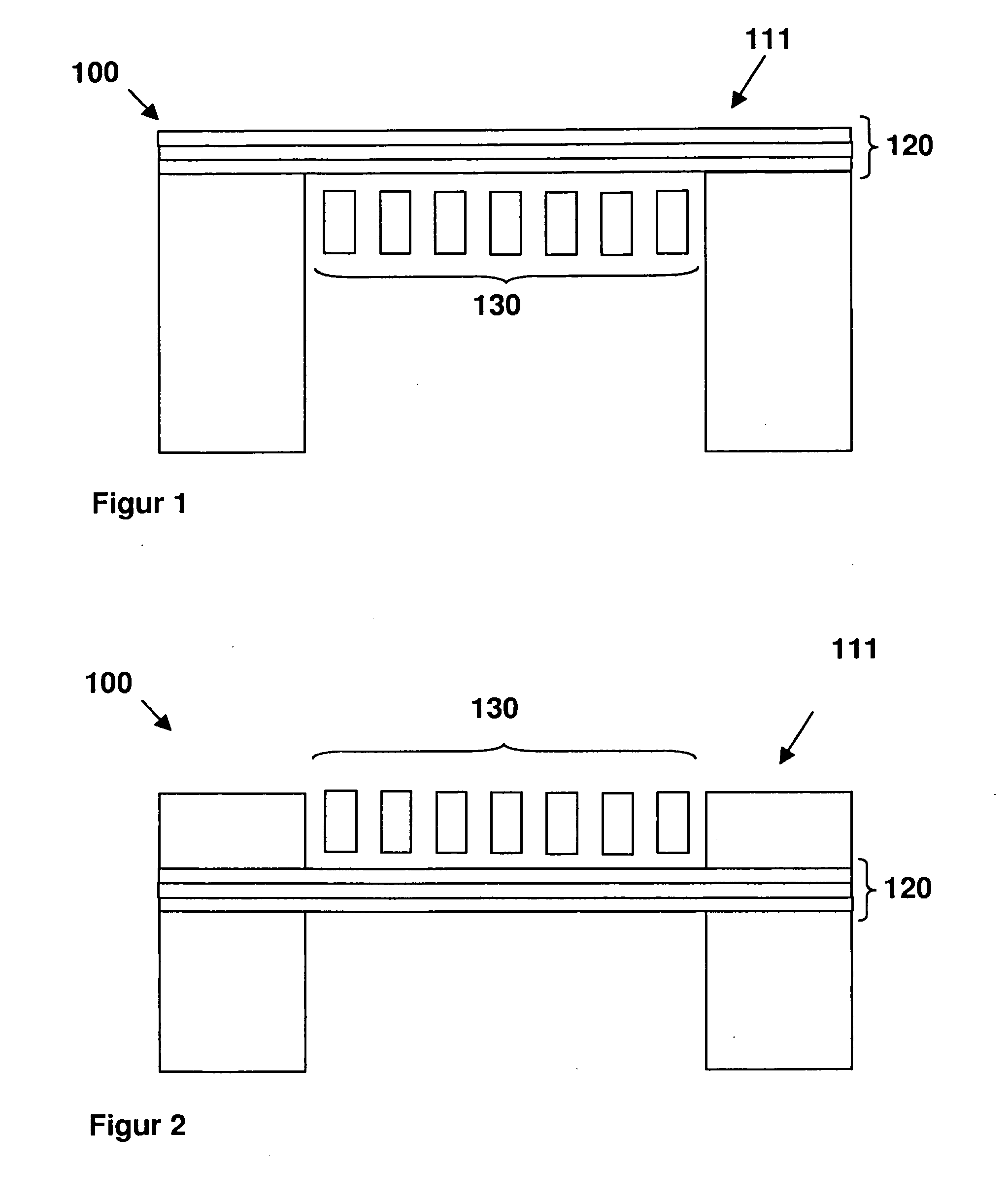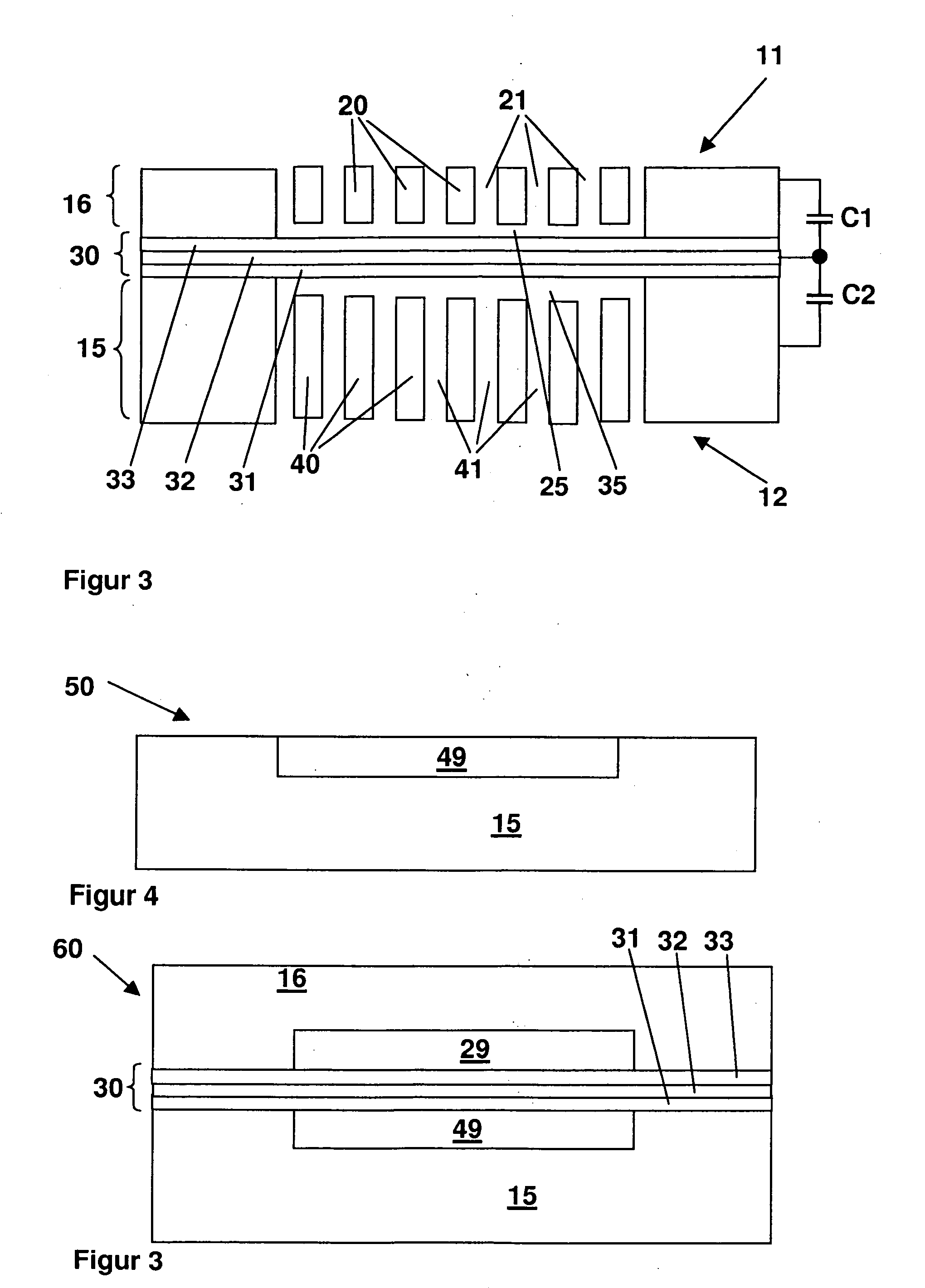Micromechanical Structure for Receiving and/or Generating Acoustic Signals, Method for Producing a Micromechnical Structure, and Use of a Micromechanical Structure
a micromechanical and acoustic signal technology, applied in the direction of electrical transducers, semiconductor devices, electrical apparatus, etc., can solve the problems of inability to incouple or outcouple acoustic signals on the top or bottom side, and reduce so as to improve the sensitivity of the assemblage, and improve the acoustic properties of the micromechanical structur
- Summary
- Abstract
- Description
- Claims
- Application Information
AI Technical Summary
Benefits of technology
Problems solved by technology
Method used
Image
Examples
Embodiment Construction
[0014]FIGS. 1 and 2 depict two micromechanical structures 100 known according to the existing art, which each have a diaphragm 120 and a grid-shaped counterelectrode 130. In one case, diaphragm 120 constitutes the surface of the micromechanical structure on a first side 111 (FIG. 1), and in the other case diaphragm 120 is provided in buried fashion, i.e. counterelectrode 130 of micromechanical structure 100 constitutes the surface of micromechanical structure 100 on first side 111 (FIG. 2).
[0015]FIG. 3 depicts a micromechanical structure 10 according to the present invention. FIG. 4 depicts a first precursor structure 50, and FIG. 5 a second precursor structure 60. FIGS. 3 to 5 are hereinafter described together. Micromechanical structure 10 according to the present invention has a first counterelement 20, a diaphragm 30, and a second counterelement 40. First counterelement 20 has first openings 21, and second counterelement 40 has second openings 41. According to the present invent...
PUM
 Login to View More
Login to View More Abstract
Description
Claims
Application Information
 Login to View More
Login to View More - R&D
- Intellectual Property
- Life Sciences
- Materials
- Tech Scout
- Unparalleled Data Quality
- Higher Quality Content
- 60% Fewer Hallucinations
Browse by: Latest US Patents, China's latest patents, Technical Efficacy Thesaurus, Application Domain, Technology Topic, Popular Technical Reports.
© 2025 PatSnap. All rights reserved.Legal|Privacy policy|Modern Slavery Act Transparency Statement|Sitemap|About US| Contact US: help@patsnap.com



